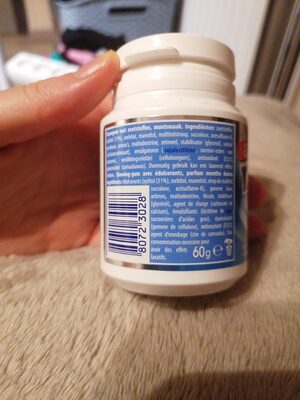Mentos - 60g
Aquesta pàgina del producte no està completa. Podeu ajudar a completar-la editant-la i afegint-hi més dades a partir de les fotos ja disponibles, o fent-ne més amb l'aplicació de androide o iPhone / iPad. Gràcies!
×
Codi de barres: 80723028
Quantitat: 60g
Marques: Mentos
Categories: Snacks, Aperitius dolços, Llaminadures, Xiclets, en:Sugar-free chewing gum
Botigues: Delhaize
Matching with your preferences
Entorn
Empaquetament
Transport
Report a problem
Fonts de dades
Producte afegit per openfoodfacts-contributors
Última modificació de la pàgina del producte per sebleouf.
La pàgina del producte, també editada per acuario, countrybot, derbou, elcoco, kiliweb, musarana, thaialagata, yaradv, yuka.LO1QO-eHIuh5EcXCwd8G2CLmOem8Mu9CE04Jog, yuka.sY2b0xO6T85zoF3NwEKvlkttAtDujhztFzL4sEyMmfOefpXpRv1w4Kj3Lag.
Si les dades són incorrectes o incompletes, pot completar o corregir editant aquesta pàgina.







